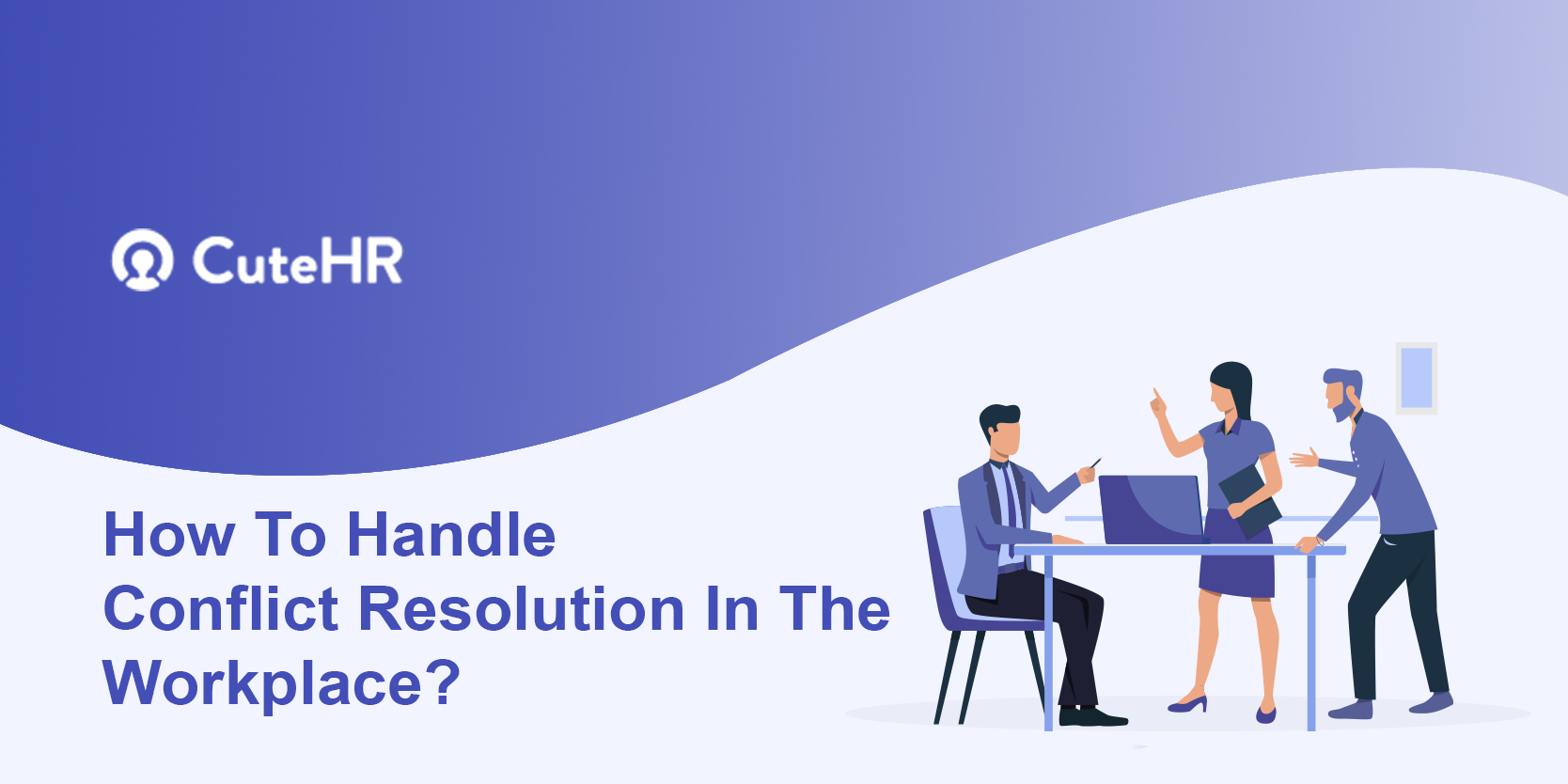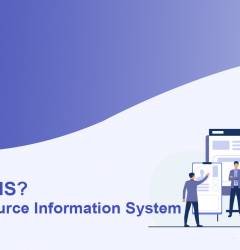01 Aug

It is true that conflicts are inevitable for human beings. Almost everyone on this planet experiences it every day either with their friends, family or more often at their workplaces. In professional lives, conflicts mainly arise due to a clash of interests which results in a great extent of discomfort, frustration, anger, sadness, and even pain. It has ideally become an ordinary aspect of life.
In the present day world, companies and organizations recruit employees from different corners of the world with different cultural and intellectual backgrounds and contradictory viewpoints. In a working environment consisting of people having different ideas and outlooks towards the same topic, disputes are unavoidable.
Conflicts can never be prevented, rather it needs to be resolved or managed to deal with it effectively. The conflict management process in a company can help in decreasing the occurrence of conflict among the employees right at the beginning. Conflict resolution in the workplace is one of the most essential factors in a collective workspace that helps in differentiating a company from the rest of others.
Therefore, it is highly essential to resolve a conflict with the proper procedure for a fair-minded decision. But don’t know the proper steps to be followed? Don’t worry. We’ve got the whole topic of conflict resolution in the workplace entirely covered along with the best ways through which you can resolve and manage conflicts while ensuring fair play. Let us first have a look at what actually is conflict resolution in the workplace.
Table of Contents
What Is Conflict Resolution In The Workplace?
According to the Cambridge dictionary, the term ‘conflict’ stands for:
“An active disagreement between people with opposing principles or ideology.”
Conflict resolution is nothing but the process of resolving an issue or a dispute between two or more people. Conflicts can happen between staff members, coworkers, managers, team members, or even clients. In such scenarios, it is highly important to negotiate with disputers.
Solving a conflict follows the logic which is very well mentioned in its definition:
- Make the disputing parties agree to a common goal.
- Find the best resolution to the disagreement.
- Turn the active into passive.
It sounds pretty straightforward, doesn’t it? Well actually, it is not. Every year multiple companies and organizations lose both valuable employees as well as customers/clients as a side effect of workplace conflicts.

A study by American Management Association (AMA) found that
Managers spend more than 24% of their work time managing conflicts in the workplace, usually without any confirmation of finding the perfect resolution.
Hence, conflict resolution in the workplace is highly critical.
What Are The Common Causes Of The Above Workplace Conflict?
Poor Communication
Poor communication can be a result of a new or a different approach in the normal communication style of your workplace. A broken-down communication may result in employees making wrong expectations and beliefs in the workplace gossip. Poor communication not only arises conflicts but also results in lower employee morale and motivation.
Different Ideas Or Work Style
This is most commonly seen in workplaces with a high number of employees mostly due to generational gaps. The ideologies and values of young workers may differ from that of their older colleagues. The main cause of conflicts isn’t the different values, it is the negligence to accept that difference. When these employees don’t accept the differences, they tend to disrespect each other.
Personality Clashes
Every qualified and skilled employee has different backgrounds and work experiences which play a major role in molding their personality. The problem arises when employees fail to understand or accept the difference in each other’s personalities.
An Unhealthy Workplace Environment
Many domains empower the employees to work much harder through the means of a competitive environment. And if the salary is directly linked to the employee performance, there are huge chances of facing strong competition between employees. A spoiled and vandalized environment can come in place if a competitive atmosphere is not well-managed by the organization. Such a destructive environment puts off cooperation, teamwork and promotes individualism.
Some Common Workplace Conflicts
Task-based conflict
These disagreements usually arise in situations where an interdependent project is distributed among colleagues belonging to different departments or teams. In such projects, the employees need to coordinate with others for their tasks so that everyone can get the project done successfully. If a particular employee or a team is constantly late on doing their part, it may affect the entire group resulting in disputes.
Work Style Conflicts
Some employees prefer to work in groups whereas some love to be alone. Some employees need no extra guidance regarding the completion of a task while others like external guidance in every single step. There are some who get more work done under pressure while others hate pressure. This idea applies here as it ends up in conflicts throughout the workplace.
Leadership Conflicts
Just as with work styles, everyone has a different leadership style and the employee reactions to those leadership styles are also different. Some leaders are very bold and captivating, whereas others are laid-back, friendly, and encouraging. Some are too strict and technical on rules and regulations whereas others are rule-breakers themselves. It depends on the employees how to adopt the difference throughout the company which when not accepted by everyone, leads to conflicts.
Personality Based Conflicts
Each and every employee has a unique personality and it’s not always that employees will like working with every new co-worker they meet. As discussed earlier, personality clash usually happens when one deliberately tries to prove themselves superior which ultimately creates issues and results in workplace conflict.
Harassment or Discrimination
Discrimination is always the most sensitive topic of workplace conflict. Harassment or discrimination due to gender, age, race, or other delicate areas is majorly due to a lack of acceptance, open-mindedness, and understanding in the company. Such conflicts are most serious and need to be resolved at once.
What is the impact of workplace conflict?
A workplace conflict can lead to decreased productivity and engagement, infective leadership, increased stress, mistrust, doubtfulness, team dysfunction, higher turnovers ultimately resulting in loss of valuable employees. An effective conflict resolution in the workplace can help in eradicating or decreasing most of these side effects and can also result in benefitting the company.
Conflict resolution in the workplace can be a bit challenging, especially when the issue is too complex or related to any sensitive matter. On that account, it is really important to use the best strategies to resolve conflicts in the workplace. Here are some of the strategies that you can adopt.
Skills Required For Conflict Resolution In The Workplace
For acing out your conflict resolution in the workplace and maintaining a positive workplace, you need to have the given set of skills:
Feeling Of Empathy
The feeling of empathy is a very important aspect of conflict resolution in the workplace. It helps you to understand the point of a person even if you are in disagreement or arguing with the person. This superior skill will permit you to treat everyone with respect and love.
Effective Listening And Communication
In case of conflict regarding sensitive issues or deep matters, it is essential to bring out strong sentiments and communication. This is really beneficial as it will highlight your openness towards their feelings and emotions. You must genuinely be hearing the employees out without worrying about your response.
Fair-minded And Unbiased Agreement.
Taking right and impartial decisions is really crucial while conflict resolution in the workplace. Since you are the middleman between the two conflicting parties, you are required to stay neutral and show no act of favoritism towards a particular party. If you remain biased towards one, the conflict will become much worse.
Sence Of Forgiveness
According to the Holy Bible, forgiveness is termed as an act of obedience and gratefulness to everyone including god. The willingness to forgive the employees and staff for their mistakes is imperative for conflict resolution in the workplace. If some employee or party is at fault or behaves unfairly but later apologizes for it, then as a leader, it is your duty to forgive them.
Best Strategies To Resolve Conflicts In The workplace
Analyze the source of conflict
The very first step that is to be followed while conflict resolution in the workplace is to clarify its source. Understanding its origin will allow you to sense how the issue came to grow in the first place. Moreover, you will also be able to get both parties to consent to the disagreement that has occurred.
In order to do that, you need to discuss the concerns of both sides of the problem. Also, you must remain unbiased. Make sure that you get maximum information from both sides. Keep asking questions until you are persuaded by both the parties and their individual issues.
Find/Have a private space to talk
The best way for conflict resolution in the workplace “peacefully” is to have a constructive conversation in a private and safe space. It’s quite obvious that everyone would like to talk to you in a safe and secure environment. Isn’t it? Such a place will also enable the parties to have completely honest conversations.
Therefore, before resolving any conflict, find a safe and private space with a dwelling environment to talk. Do not choose to discuss in front of the entire staff in the office or at a location near them. Perhaps the place that you choose, make sure that each party gets enough time to ease out and speak their views regarding the matter.
Be a good listener and allow everyone to have their say
After getting both the parties in a secluded and private space, allow each of them to put their view and perspective regarding the conflict peacefully. Provide both the parties equal and appropriate time to convey their opinion and issue without staying bais to the other. Always be open to assertiveness and a positive approach while in the meeting. Opting for this strategy will not only gratify both parties to put forward their thoughts in an open and honest manner but also ease ascertaining the cause and solution to the conflict.
Examine the situation
When you are done gathering information from both parties, take your time to correctly analyse everything. Examine every detail carefully before jumping directly onto the conclusion on the basis of whatever you’ve understood. Having a deep conversation with the involved staff individually with keen listening can help in understanding their viewpoint.
Also, you can summarise their statements and replicate them back at them to confirm your clarity. Do look for any underlying conflict sources that may not be evident at first although very helpful.
Find out ways to meet the similar objectives
While conducting conflict resolution in the workplace, the process requires you to have a common goal which is resolving the issue and certifying that it does not appear again. But most importantly, to solve any issue, you need to be aware of the different stages of conflict. By adopting such a method, you will have an ideal way to meet common intentions.
Once you are done figuring out the source of the conflict, investigating the topic in detail, and having the viewpoint of both parties, you need to bring both parties together and discuss their common way you can execute to meet the mutual goal, which is resolving the issue as soon as possible. Listen, discuss, maintain transparency, and brainstorm until you are out of all the left options. Finding the source of conflict is the key step to resolve any matter.
Acknowledge the best solution and determine the responsibilities of each party for the resolution
Resolving and managing a conflict serges the mode of communication. Employees and staff will easily be able to cooperate if they share a common goal, which is meeting the company’s objectives. Therefore, after analyzing the whole situation and establishing different ways through which you can resolve the matter, both parties need to agree to a common conclusion on the best solution for the problem. Perhaps, to agree on a mutual solution, you need to establish the solutions which each party can live with. Figuring out the common grounds can help. Also, decide the responsibilities each party has in resolving the conflict.
It is very crucial to identify the root cause and to completely delete the issue and ensure that it will never arise again. Letting every involved individual be a part of your conflict resolution in the workplace can teach your employees how to handle conflicts on their own.
Draw conclusions from the ongoing things and decide on penetrative strategies for the future
Conflict resolution in the workplace is never to be assumed. Having effective communication can dominate the business. Knowing that your workplace has effective communication can help you ensure that the employees are working together to reach the company’s goal. Perhaps, the second step of having effective communication is keeping a keen eye on the issues at every single step. Impose the same solutions if necessary. If any conflict is complex, take the necessary actions.
If time permits, draft down some preventative strategies for future conflict resolution in the workplace. No matter what, issues always arise in the workplace. The qualified employees working at your workplace may not always agree on everything. Therefore, always be open to face all kinds of issues and look for the lessons you can learn that can help in upcoming conflict resolution in the workplace. This will help you take the right and effective steps when such an issue repeats as well as improve and look after your conflict management skills by experience.
What Are The Benefits Of Conflict Resolution In the Workplace?
As mentioned earlier, effective conflict resolution in the workplace is extremely helpful in reducing the side effects of conflicts. But it’s not just restricted to that. There are numerous other benefits for your company as well:
- Increased trust among the employers and employees.
- Growth in the productivity, performance, and motivation of the workers.
- More effective leadership spirit.
- Decrease in work stress, absenteeism, and interruption.
- Higher employee retention rates.
- Enhanced workplace effectiveness, communication, and team coordination.
- Most importantly, developed conflict resolution skills.
Wrapping It Up
No doubt that conflicts are a part of our day-to-day lives. You may have to deal with arguments or a clash of interests with your teammates, colleagues, or co-workers at work. However, there are numerous effective steps for conflict resolution in the workplace that ensure these issues are not left unsolved. Conflict resolution in the workplace and proper management of it is highly crucial in meeting the organizational goal.
Therefore, if you have any problems or conflicts with your employees or employers, always look for ideal resolutions that can handle the situation with excellence. Hope the above tips and techniques helped you to learn conflict resolution in the workplace.
FAQs (Frequently Asked Questions)
Why is it important to resolve conflicts in the workplace?
A workplace conflict can lead to decreased productivity and engagement, infective leadership, increased stress, mistrust, doubtfulness, team dysfunction, higher turnovers ultimately resulting in loss of valuable employees. An effective conflict resolution in the workplace can help in eradicating or decreasing most of these side effects and can also result in benefitting the company.
What is the best conflict resolution strategy?
Analyze the source of conflict
The very first step that is to be followed while resolving a conflict is to clarify its source. Understanding its origin will allow you to sense how the issue came to grow in the first place. Moreover, you will also be able to get both parties to consent to the disagreement that has occurred. In order to do that, you need to discuss the concerns of both sides of the problem. Also, you must remain unbiased. Make sure that you get maximum information from both sides. Keep asking questions until you are persuaded by both the parties and their individual issues.













Himani